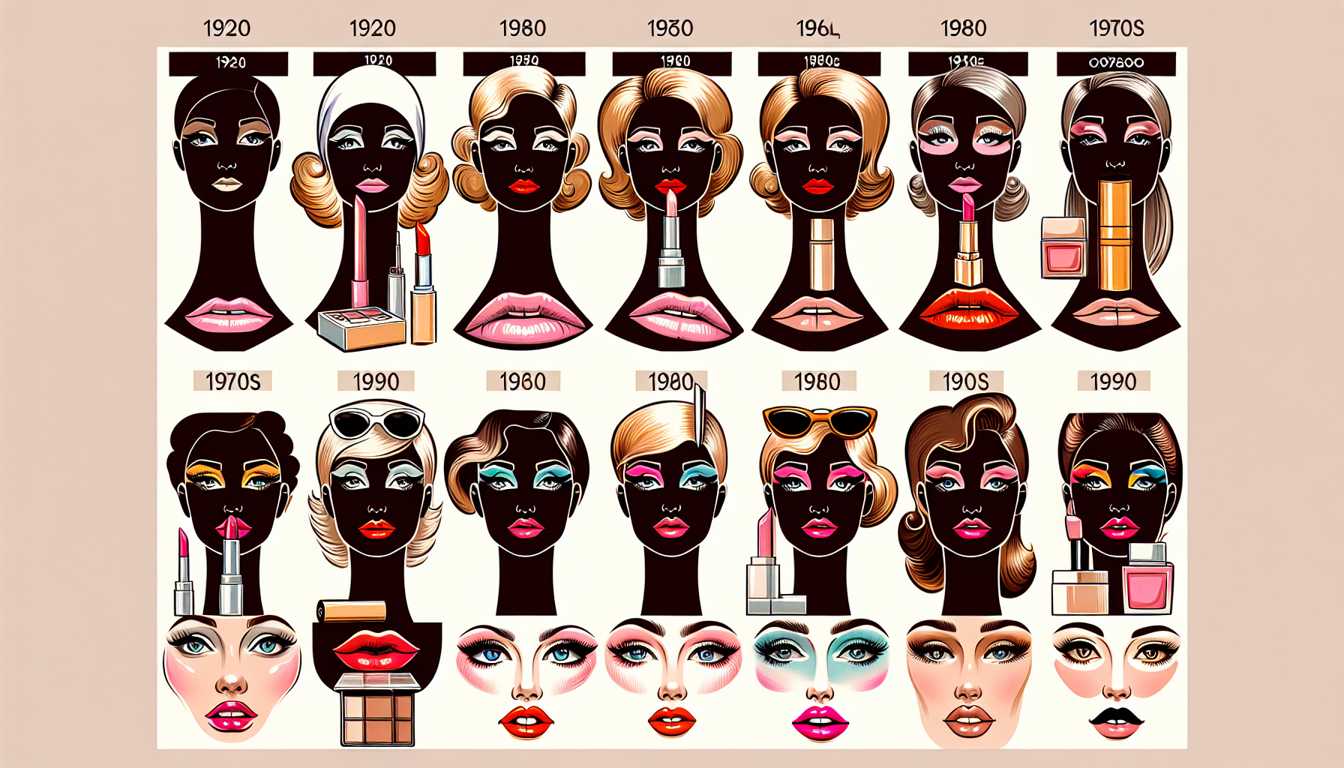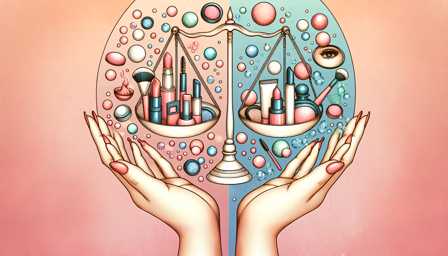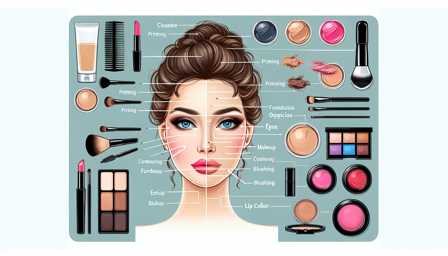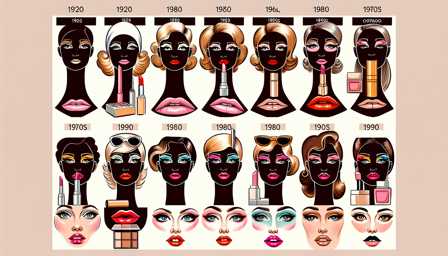
The Evolution of Makeup Trends Through the Decades
Makeup has been an integral part of human culture for centuries, evolving with the times and reflecting societal changes, technological advancements, and artistic movements. This article will delve into the fascinating journey of makeup trends from the 1920s to the 2020s, highlighting key products and styles that defined each era.
1920s: The Roaring Twenties
The 1920s marked a significant shift in makeup trends, mirroring the era's spirit of liberation and flamboyance. Women began to embrace cosmetics previously deemed inappropriate for respectable society. The iconic look of the 1920s was characterized by dark, heavily lined eyes, often achieved using kohl eyeliner. Max Factor's Pan-Cake foundation, a groundbreaking product of this era, provided a smoother, more uniform complexion. Lips were painted in deep reds, and the Cupid's bow shape was immensely popular, while thin, downward-angled eyebrows completed the dramatic look.
1930s: Hollywood Glamour
The 1930s were heavily influenced by the allure of Hollywood. Makeup became a symbol of glamour, with screen sirens like Jean Harlow and Greta Garbo setting trends. The eyebrows remained thin but took on a more natural curve, and eyeshadows in shades of green, blue, and purple became popular. Lipsticks in richer shades, including dark reds and maroons, were favored. Face powder, which helped achieve the matte, porcelain look of movie stars, was a staple product.
1940s: The War-time Look
During the 1940s, World War II had a significant impact on makeup. With resources limited, women were encouraged to be resourceful. Makeup became a symbol of morale-boosting femininity in tough times. The look was more natural, with a focus on a clean, healthy complexion. Red lipstick, however, remained a popular way to make a bold statement, with brands like Elizabeth Arden and Revlon leading the market.
1950s: The Birth of the Modern Beauty Industry
Post-war prosperity in the 1950s saw a boom in the beauty industry. This era witnessed the rise of iconic beauties like Marilyn Monroe and Audrey Hepburn, who popularized fuller, more defined eyebrows and the winged eyeliner look. The invention of the liquid eyeliner made this look more accessible. Lipsticks in various shades of red, including brighter and pinker tones, became popular. The era also saw the introduction of cream-based products, like blush and eyeshadows, offering more versatility in application.
1960s: Bold and Experimental
The 1960s were a time of bold experimentation in makeup. The decade is best known for the dramatic eye makeup, epitomized by the model Twiggy's look: thick, exaggerated eyelashes, both top and bottom, and prominent crease lines. Pale lipstick and a more understated lip color contrasted the dramatic eyes. This era also saw the introduction of false eyelashes into mainstream beauty culture.
1970s: The Natural Look
In contrast to the 1960s, the 1970s embraced a more natural look. The decade was heavily influenced by the hippie movement, favoring a more minimalistic approach to makeup. Sun-kissed skin was in, and bronzer became a popular product. The eyes were lightly defined with soft, neutral eyeshadows, and lip gloss gained popularity over the traditional lipstick.
1980s: The Age of Excess
The 1980s were all about bold colors and excess. Bright, neon eyeshadows, heavy blush, and bold lip colors defined this era's makeup trends. The look was unapologetically flashy and vibrant, reflecting the decade's overall ethos of excess and extravagance. Brands like MAC Cosmetics, founded in 1984, started to gain prominence during this time.
1990s: Grunge and Minimalism
The 1990s marked a shift to a more grunge and minimalist aesthetic. Brown and nude lipsticks became the rage, popularized by celebrities like Kate Moss and the cast of "Friends." The "no-makeup" makeup look gained popularity, focusing on a more natural, understated appearance. Matte skin was back in vogue, and powder foundations and matte lipsticks were key products.
2000s: The Digital Age
The dawn of the new millennium saw the influence of digital technology on makeup trends. There was a return to more glamorous looks, with shimmery eyeshadows and glossy lips. The era also saw the rise of celebrity makeup lines, with stars like Gwen Stefani and Rihanna launching their own brands, GXVE Beauty and Fenty Beauty respectively.
2010s: The Age of Social Media
The 2010s were dominated by the impact of social media on beauty trends. Instagram and YouTube beauty influencers became major trendsetters. This era saw the rise of bold eyebrows, contouring,
and highlighters as essential products. The decade also marked a shift towards inclusivity and diversity in the beauty industry, with brands like Fenty Beauty by Rihanna leading the way in offering a wide range of shades for all skin tones.
2020s: Sustainability and Inclusivity
The current trend in makeup emphasizes sustainability and inclusivity. Consumers are increasingly looking for products that are eco-friendly, cruelty-free, and inclusive of all skin types and tones. There is also a growing trend towards multi-use products and a "less is more" approach, reflecting a broader societal shift towards minimalism and environmental consciousness.
Conclusion
The evolution of makeup trends over the decades not only reflects changes in beauty standards and technological advancements but also mirrors broader societal changes. From the roaring twenties to the eco-conscious 2020s, makeup continues to be a powerful tool for self-expression and identity.



